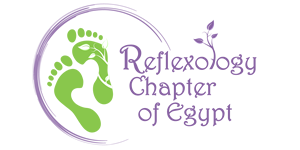Massage therapy
.jpg)
Massage is one of the oldest healing arts: Chinese records dating back to 3,000 years; the ancient Hindus, Persians and Egyptians applied forms of massage for many ailments; and Hippocrates wrote papers recommending the use of rubbing and friction for joint and circulatory problems.
The word is derived from the Greek 'masso', to knead and the Arabic 'mass', to press gently.
Today the benefits of massage are varied and far-reaching. Massage therapy has also proven beneficial for many chronic conditions, including low back pain, arthritis, bursitis, fatigue, high blood pressure, diabetes, immunity suppression, depression etc. As well as relieving stress and tension which can lead to diseases and illness if not treated early enough.
One of the definitions of massage is the application of soft tissue manipulation techniques to the body in order to reduce stress and fatigue as well as improving circulation.
Connective Tissue Massage
Also known as "Bindegewebsmassage", these techniques are designed to specifically affect the connective tissue of the body. CTM was developed in Germany by Elizabeth Dicke. After diagnosis of a serious medical problem, she experimented withdifferent types of massage on herself. She found when she applied light pressure through the skin and connective tissue in one area of the body, there was a related effect at a distant site. The technique consists of the massage therapist subtly hooking her fingers into the skin and superficial connective tissue while performing a pulling stroke that in a way stretches the skin. CTM leaves a visible mark that looks somewhat like an abrasion or burn, but which goes away without leaving a scar. In Germany, it is considered a physical therapy technique; in many parts of Europe, it is considered a medical technique & it is even taught at medical schools in many parts of the globe.Deep Tissue Massage
Techniques which utilize deep tissue/deep muscle massage are administered to affect the sub-layer of musculature and fascia. These techniques require more advanced training and a more thorough understanding of anatomy and physiology. The muscles must be relaxed in order to effectively perform deep tissue massage, otherwise tight surface muscles prevent the practitioner from reaching deeper musculature. It helps with chronic muscular pain and injury rehabilitation, and reduces inflammation-related pain caused by arthritis and tendenitis..jpg)
Infant Massage Instruction
Instructors teach parents how to properly massage their infants. This specialized form of touch is successful, not only in the critical weight gain of premature infants, but also in creating a strong bond between parent and infant and exposing a young child to the benefits and pleasures of touch.Drainage Therapy
Lymph Drainage Therapy is unique in that healthcare professionals learn how to regulate the lymphatic flow. As they develop their skills, they can then identify the rhythm and quality of the lymphatic flow. Advanced practitioners will be able to precisely map the lymphatic flow to find alternate pathways for drainage.Nikkon Restorative Massage (Okazaki Restorative Massage)
Nikkon Restorative Massage was developed by Professor Henry Seishiro Okazaki in Hawaii in the 1920s. He incorporated Japanese, Chinese, and Hawaiian techniques. The goal of Okazaki’s style was to restore health and pull toxins out of the body through proper application of pressure using fingers, forearms, and elbows. The result is proper realignment of the body.Prenatal/Pregnancy Massage
Performed by a trained perinatal specialist, many methods of massage and somatictherapies are both effective and safe prenatally, and during labor and postpartum periods of women’s pregnancies. Prenatally, specific techniques can reduce pregnancy discomforts and concerns and enhance the physiological and emotional well-being of both mother and fetus. Skilled & appropriate touch facilitates labor, shortening labor times and eases pain and anxiety. In the postpartum period, specialized techniques rebalance structure, physiology, and emotions of the new mother. Specialized, advanced training in the anatomy, physiology, complications, precautions, and contraindications is highly recommended, and many practitioners require referrals from physicians prior to therapy..jpg)
Rofling
Rolfing is a series of deep massage treatments, which aim to re-establish the natural alignment and structural integration of the body. Dr Ida Rolf developed the system during the mid 20th century. Dr Rolf believed that "an effective human being is a whole that is greater than the sum of its parts". She believed that form and function are a unity - two sides of the same coin. In order to enhance function an appropriate form must exist or be created.Swedish Massage
One of the most commonly taught and well-known massage techniques, Swedish massage is a vigorous system of treatment designed to energize the body by stimulating circulation. There are Five basic strokes, which are all flowing toward the heart and are used to manipulate the soft tissues of the body. Therapists use a combination of rubbing, rolling, and tapping movements and some apply oils, to reduce friction on the skin and create a pleasant effect. There are many benefits of Swedish massage which include generalized relaxation and improved circulation which may speed healing and reduce swelling from injury.Thai Massage
Also called nuad bo rarn, Thai massage has been taught and practiced in Thailand for approximately 2,500 years. It is based on the theory the body is made up of 72,000 energy lines out of which 10 hold top priority. Thai massage also involves peripheral stimulating i.e. it acts as an external stimulant to produce specific internal effects. This point serves as the main division between Thai and Western massage.Yogassage
This is a massage modality that enhances the free and natural movements of the body through gentle, sustained stretching and applied pressure. Gentle vibration and energy work with the chakras is practiced to have an integrated effect. Yogassage has been compared to Thai massage but on a table as it mixes and takes elements from both the Eastern and Western cultures during the session..jpg)
